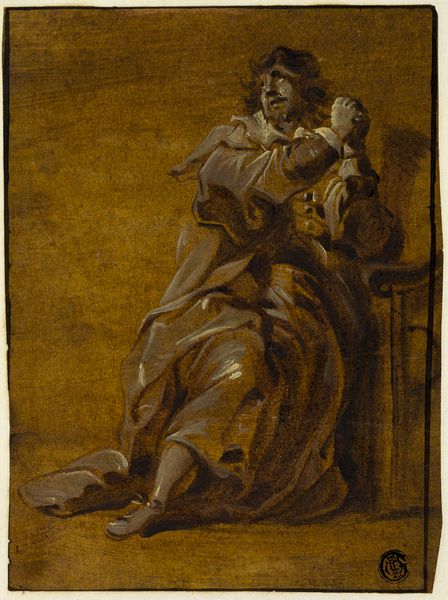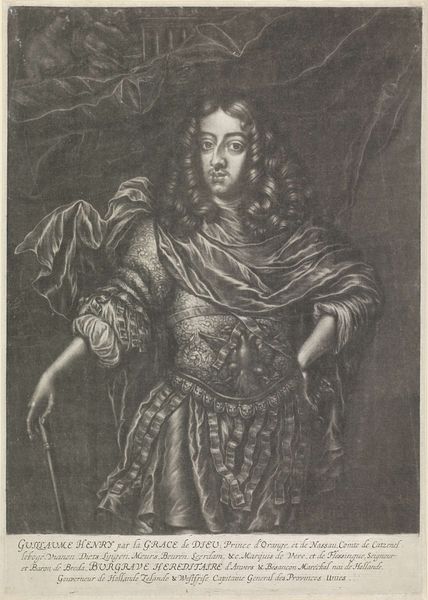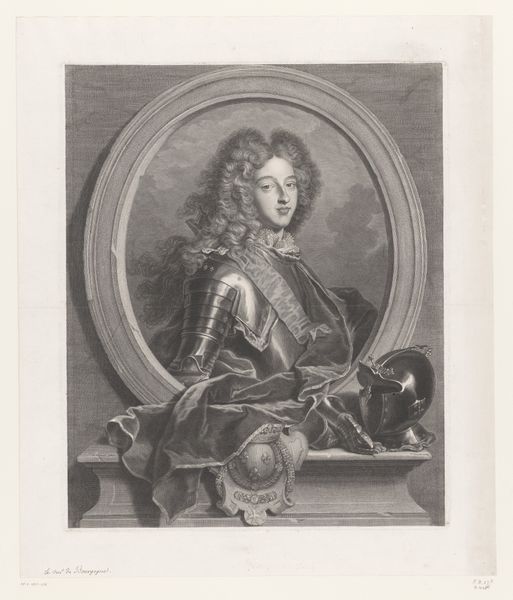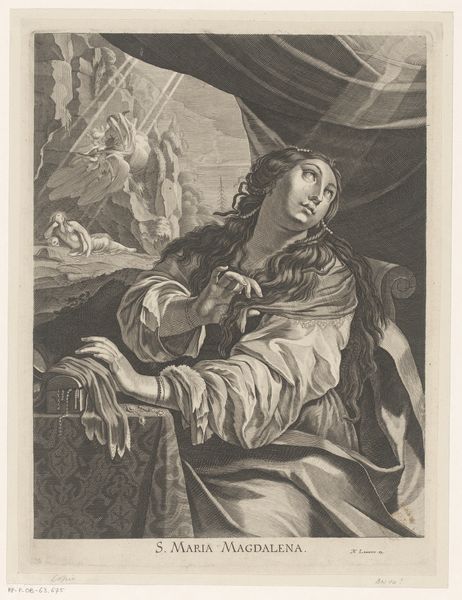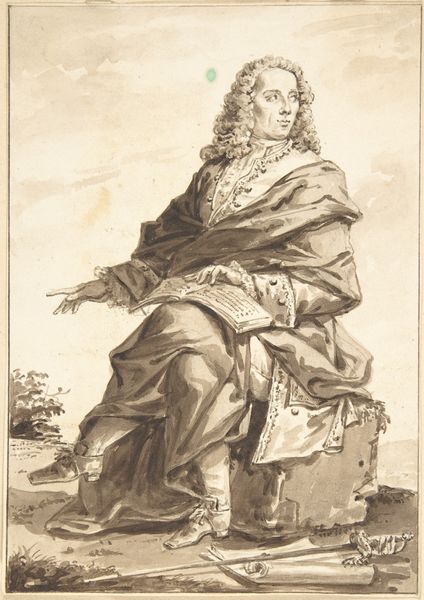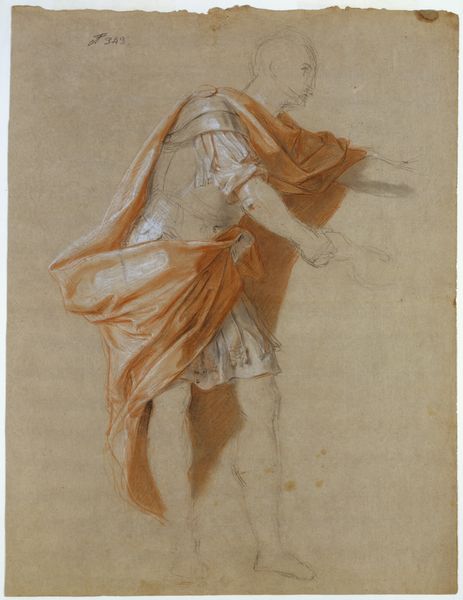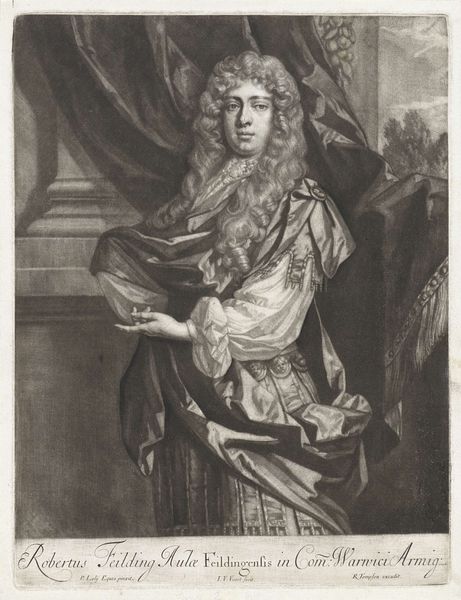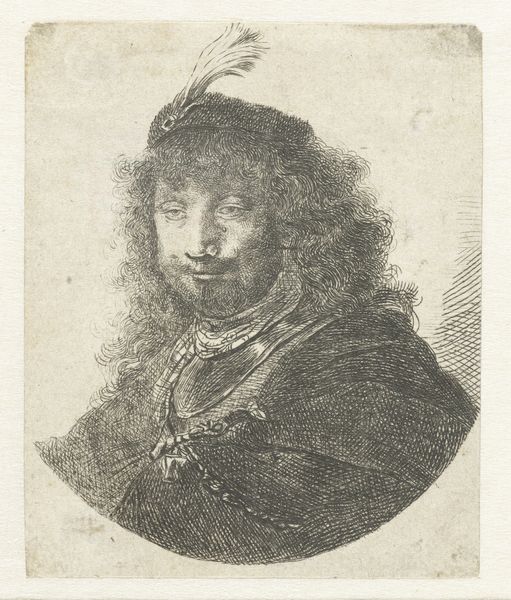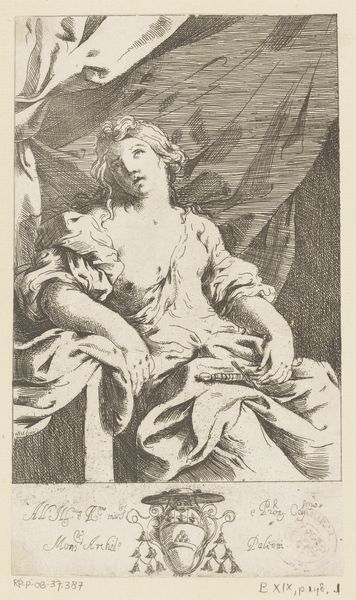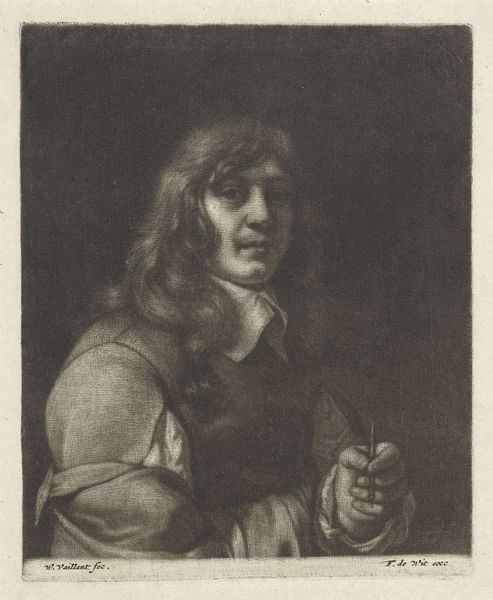
oil-paint, oil
#
portrait
#
baroque
#
oil-paint
#
oil
#
landscape
#
history-painting
Dimensions: 19.3 x 15.2 x 0.1 cm
Copyright: Public Domain
Curator: Johann Valentin Grambs created this striking "Portrait of a Man in Antique Style Armour" around 1675, here at the Städel Museum. Editor: My first thought is how staged the whole thing feels. There's a theatrical air, almost as if we've stumbled into some kind of Baroque play. The composition, especially the contrast between the sharply lit figure and the murky background, only heightens that. Curator: Staged certainly, yes. The artwork is oil on canvas, though, upon close examination, one sees he relies heavily on conventional materials, building from thin layers that give his colors that luminous quality, yet without particularly remarkable technique. He seems reliant on fairly available pigments of the time. The armour itself looks rather more symbolic. Editor: It is quite romanticized! That armor reads to me less as battlefield-ready and more as a signifier of virtue or heroism—almost as if he's posing as an ideal of masculine strength and statesmanship. Curator: Exactly, or maybe even virtue signalling within his class! You see, by choosing to represent this man in a fashion emulative of historical figures or ideals, Grambs positions him within a very specific societal framework. Editor: I'm also curious about the objects laid out on the table beside him: is there a symbolic meaning there? Curator: Certainly! Objects serve as tools. Grambs employs these various visual symbols to underscore the portrait's narrative qualities. To understand those details you need to understand the social constructs of that era. This would offer the contemporary patron assurance. It is possible there are additional familial and personal symbols embedded, especially coded to appeal directly to the sitter, perhaps about land ownership. Editor: Very true! By including that landscape through the archway, he is linking the sitter to dominion. And it seems Grambs seeks to explore ideas surrounding history and heroism. I'm curious, however, how those resonate differently across time, shaped by social and political contexts. Curator: An essential question when faced with something that now functions as an artwork! Ultimately, Grambs invites us to consider not only the individual portrayed, but also the enduring influence of symbols and social materials shaping perceptions of identity, history, and the nature of display. Editor: Yes, and maybe it causes one to also reflect upon the social materials in art today.
Comments
No comments
Be the first to comment and join the conversation on the ultimate creative platform.
